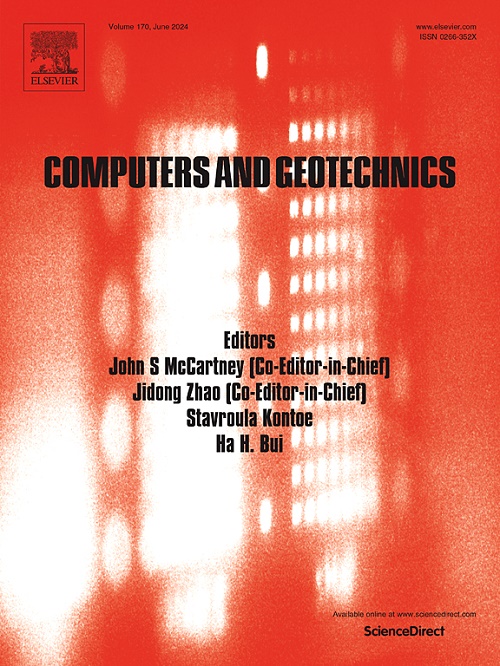Development and validation of deformation-dependent theoretical model for soil arching effect under unloading
IF 5.3
1区 工程技术
Q1 COMPUTER SCIENCE, INTERDISCIPLINARY APPLICATIONS
引用次数: 0
Abstract
The evolution of soil arching effect is highly dependent on the variation of the unloading displacement or the soil differential displacement, while this issue has scarcely been addressed in a theoretical manner. In this study, a series of trapdoor tests were conducted on dry sand at various fill heights and relative densities. The testing results indicated that the evolution of soil arching effect followed the variation of shear bands closely. Based on the trapdoor testing results, a deformation-dependent theoretical model for soil arching effect was proposed under plane-strain condition. From the validation between the calculating results by the present theoretical model and the testing/simulating data from the present/previous studies, the present model succeeded to evaluate the evolution of the soil arching effect with the normalized trapdoor displacement. In addition, this model was validated to appropriately capture the characteristics of the soil arching effect, including the minimum/ultimate soil arching ratio and their corresponding normalized trapdoor displacements. Finally, a parametric study was performed on the present theoretical model, to assess the effects of fill height, trapdoor width, critical-state internal friction angle and initial relative density of soil on the soil arching effect, offering a technical reference for wider applications.
求助全文
约1分钟内获得全文
求助全文
来源期刊

Computers and Geotechnics
地学-地球科学综合
CiteScore
9.10
自引率
15.10%
发文量
438
审稿时长
45 days
期刊介绍:
The use of computers is firmly established in geotechnical engineering and continues to grow rapidly in both engineering practice and academe. The development of advanced numerical techniques and constitutive modeling, in conjunction with rapid developments in computer hardware, enables problems to be tackled that were unthinkable even a few years ago. Computers and Geotechnics provides an up-to-date reference for engineers and researchers engaged in computer aided analysis and research in geotechnical engineering. The journal is intended for an expeditious dissemination of advanced computer applications across a broad range of geotechnical topics. Contributions on advances in numerical algorithms, computer implementation of new constitutive models and probabilistic methods are especially encouraged.
 求助内容:
求助内容: 应助结果提醒方式:
应助结果提醒方式:


